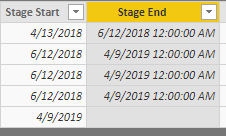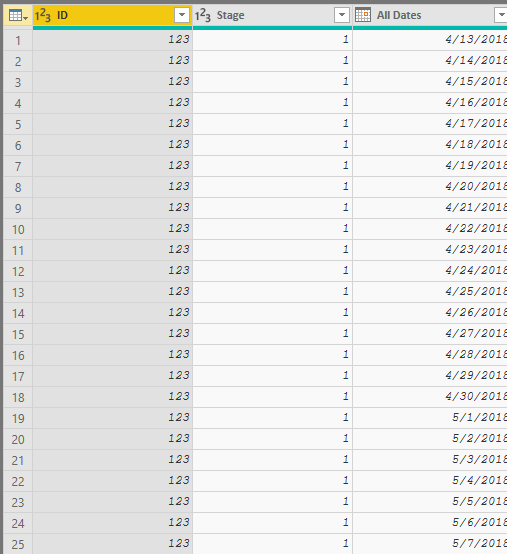I attached the pbix file below so you can step through the applied steps, but here’s the general idea:
Group the rows by ID (I assumed there would be more than one ID in reality) and aggregate by all rows
Add an index column to each sub-table:
Table.AddIndexColumn(
[All Data], “Index”,1,1)
Remove the other columns, and expand the table with the index out
Add a new column that will provide the start date of the next column based on the index
List.Range( #"Expanded Index"[Start Date], [Index.1],1)
Expand that list out ( it will only be 1 record) and have your end date. Though once the IDs change, that first new ID row will have an incorrect end date. So we check for that with a new column
= Table.AddColumn(#"Expanded Custom", "Custom.1", each if [Custom] >=[Start Date] then [Custom] else null)
Now that we have the correct end date, we can now build a list of all the dates that are between those two.
try
List.Dates(
[Start Date],
Duration.Days([Stage End] - [Start Date] ) + 1,
#duration( 1, 0,0,0)
)
otherwise
List.Dates(
[Start Date],
1,
#duration( 1, 0,0,0)
)
We have to account for a null in the end date, which is what the “otherwise” is account for.
Expand that new column out. Remove all the misc columns and set data types and you should be good to go.
File:
Calculate End Date in Query Editor.pbix (11.8 KB)



